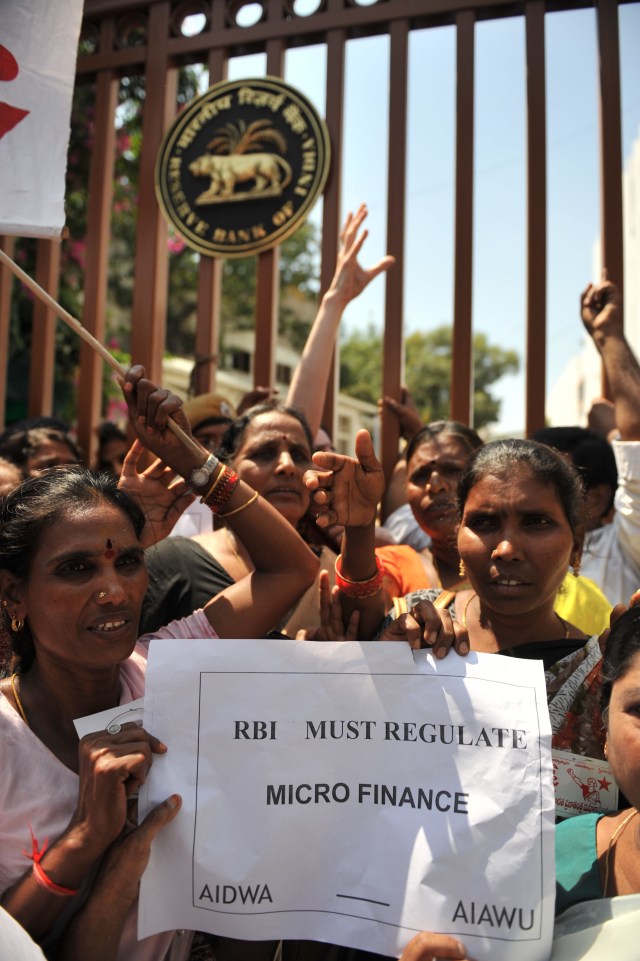“Poverty should be eradicated, not seen as a money-making opportunity.”[1]
–Mohamed Yunus, founder of the Grameen Bank,
and winner of the 2006 Nobel Peace Prize.
Social finance makes a compelling promise, to make the world a better place by harnessing the power of the market to address pressing global social challenges. To do well financially by doing good socially.[2] In order to fulfill this promise, however, social finance must strike a delicate balance between two historically opposed imperatives, profit and social benefit. And when this balance tips in favor of profitability, social finance can end up harming the very people whose lives it seeks to improve.
In my article, Regulating Social Finance: Can Social Stock Exchanges Meet the Challenge? (forthcoming in the University of Pennsylvania Journal of International Law) I argue that this is where regulation must step in, to keep social-financial hybridity in balance and to protect the already-vulnerable beneficiaries of social finance from the very real perils of mission drift. My assessment of three recently launched Social Stock Exchanges supports the case for additional regulation.
With social finance, impact investors put their capital behind ventures known as “social businesses” that profitably cater to underserved populations. These businesses provide access to critical goods and services, such as financial services, healthcare, affordable housing or quality employment to the economically and socially disadvantaged—people excluded from ordinary markets because conventional providers view them as being too costly or risky to service.
In a world of diminishing public funding for solving social problems, governments and international organizations are evermore eager to put private investment to work in the social sphere. As such, social finance is fast becoming a mainstream source of funding for goods and services that target the global poor. Studies produced by entities such as the World Economic Forum, JP Morgan, and Credit Suisse indicate that anywhere between $500 billion and $1 trillion could be channeled into impact investments by 2020.[3]
To put these figures in perspective, consider that even at the lower end of this range, impact investments would surpass Official Development Assistance—the prevailing measure of public funding to developing countries—by a factor of four.[4] Since about 70% of impact investments are currently being deployed in emerging markets, the financial volumes at stake are potentially quite transformative.[5]
Social finance seeks to address problems that are caused or aggravated by market exclusion and simultaneously exploit the tremendous market opportunities that exist at the “base of the pyramid.”[6] So far so good.
However, in pursuit of both financial and social returns on investment, social finance creates openings for eruptive conflicts of interest that can harm beneficiaries.
The history of microfinance (one branch of social finance) in India has taught us that under-regulated hybridity can have catastrophic consequences. Microfinance Institutions (MFIs) are founded on a strong social mission—to improve the livelihoods of the poor by making credit available to individuals who are considered ineligible for conventional financing because they lack credit history and collateral to secure the loan. But they also embody a strong financial mission in the sense that the credit they make available is not free: Micro-borrowers, typically poor women, must repay the loans, often at a high rate of interest. This combination of social and financial objectives within a single business exemplifies the hybridity feature of social finance.
In recent years, many financially successful MFIs have seen their financing evolve from being grant-based and sourced from philanthropic foundations, to equity-based and sourced from outside investors. Under increased commercial pressure, some MFIs in the Indian state of Andhra Pradesh prioritized expanded growth targets over social impact, effectively departing from their social mission. In a pattern reminiscent of the sub-prime crisis in the United States, these “lenders to the poor” became embroiled in aggressive over-lending and debt collection practices that culminated in a wave of borrower suicides in 2010.[7]

Indian activists of The All-India Democratic Women’s Association (AIDWA) protest in front of the Reserve Bank of India (RBI) against MFIs on October 13, 2010. By Noah Seelam.
This tragic story embodies an extreme instance of mission drift and social harm; however, the risk that less dramatic versions of mission drift will undermine the promise of social finance is endemic and must be mitigated. The influence of outside investors on businesses that service the poor requires particular vigilance. It is precisely when social businesses become successful enough to attract commercial investment that mission drift can begin to create cracks in the social goods supply chain through which beneficiaries can slip.
While the promise of social finance is certainly exciting, it must be regulated. Regulation—whether public or private—must be designed with a central objective: to protect social finance beneficiaries. Yet today, social finance, and specifically the investors and businesses operating within this space, are generally under-regulated.
Enter Social Stock Exchanges (SSEs), new platforms that connect impact investors with social businesses to commercialize the latter’s capital base. No fewer than three SSEs were established in 2013: The London Social Stock Exchange (LSSE), Canada’s Social Venture Connection (SVX), and the Mauritius-based Impact Exchange (IX). While the LSSE and SVX are both active, the IX (a platform on the Stock Exchange of Mauritius), has yet to list any social businesses.
Though they call themselves SSEs, the London SSE and SVX are not true exchanges in the sense that the former is an information portal that is designed to equip investors with information concerning the social performance of entities that are listed on conventional stock exchanges, while SVX is a private placement platform. When it launches fully, IX will be a real exchange that lists impact securities for purchase by the public.
Although they are still young and although the SSE label may at this point seem like a misnomer, SSEs are actively working to fill the regulatory vacuum in which social finance currently operates. Just as, centuries ago, stock exchanges did for conventional finance, SSEs today serve as rulemaking laboratories for social finance. They are developing and testing tools for distinguishing social businesses and investors from their conventional counterparts, standardizing social finance transactions, and shaping the relationships between the key stakeholders—investors, issuer-businesses, and beneficiaries. It is important to track how, and how well, SSEs are carrying out these experiments, since they could determine the content of social finance regulation for years to come.
I have reviewed each SSE and assessed how effective it will be in bringing regulatory order to social finance, and so far I have found all wanting. To protect the promise of social finance, SSEs must protect the interests of beneficiaries and those of investors. However SSEs rely too heavily on the blueprint set by conventional stock exchanges, which prioritizes investor interests over those of the investment-affected individuals and communities. While “blueprinting” can be effective for marketing social finance to unfamiliar investors, it obscures the interests of beneficiaries, and therefore constitutes a dangerous foundation for social finance regulation.
To correct this deficit, I recommend injecting strong beneficiary-protections into each dimension of the SSEs’ regulatory work, including mission statements, listing and corporate governance requirements, reporting requirements, and enforcement mechanisms. For example, SSEs should require issuer-businesses to report not only on performance metrics, but also on substantive feedback from beneficiaries. Issuers should also be required to have a Social Director whose job is to ensure compliance with the social mission and to link beneficiaries to management. To minimize commercial pressures to drift, investors must themselves be “patient” and committed to their investees’ social mission;[8] SSEs should therefore screen investors before granting platform access. Investment-exits should also be managed by requiring that impact securities be on-sold only to other (screened) impact investors.
My study of the SSE experiment to date reveals that regulators—be they SSEs, industry associations, or government—must make deep adjustments to the conventional finance blueprint to properly protect beneficiaries. Should they fail, social finance’s contributions to global social welfare could be not only undermined, but also severely compromised.
ENDNOTES
[1] Mohamed Yunus, Sacrificing Microcredit for Megaprofits, N.Y. Times, Jan. 14, 2011.
[2] Social finance is distinct from Socially Responsible Investing (SRI) and Corporate Social Responsibility (CSR): While SRI helps investors filter out ventures that are connected with social harms, (e.g. firearms, gambling, and child labor), impact investors actively seek out opportunities that generate social benefits (e.g. reduced poverty, improved health indicators, and additional affordable housing units). Similarly, while conventional companies typically implement CSR programs on the side of their profit-making activities, for social businesses, generating social benefits is central to the business model.
[3] World Economic Forum, From the Margins to the Mainstream: Assessment of the Impact Investment Sector and Opportunity to Engage Mainstream Investors (2013).
[4] Aid to Poor Countries Slips Further As Governments Tighten Budgets, OECD (Mar. 4, 2013).
[5] J.P. Morgan And Global Impact Investing Network, Spotlight On The Market: The Impact Investor Survey (2014).
[6] Allen Hammond et. al., The Next 4 Billion: Market Size and Business Strategy at the Base of the Pyramid (2007).
[7] Harvey Koh et al., Beyond the Pioneer: Getting Inclusive Industries to Scale (2014).
[8] What Is Patient Capital, Acumen Fund, http://acumen.org/ideas/patient-capital/ (explaining that patient capital is “a form of investment that has a high tolerance for risk, has long time horizons, is flexible to meet the needs of entrepreneurs, and is unwilling to sacrifice the needs of end customers for the sake of shareholders”).
The preceding post comes to us from Sarah Dadush, Assistant Professor of Law at Rutgers School of Law. The post is based on her article, entitled “Regulating Social Finance: Can Social Stock Exchanges Meet the Challenge?” and available here.
 Sky Blog
Sky Blog
